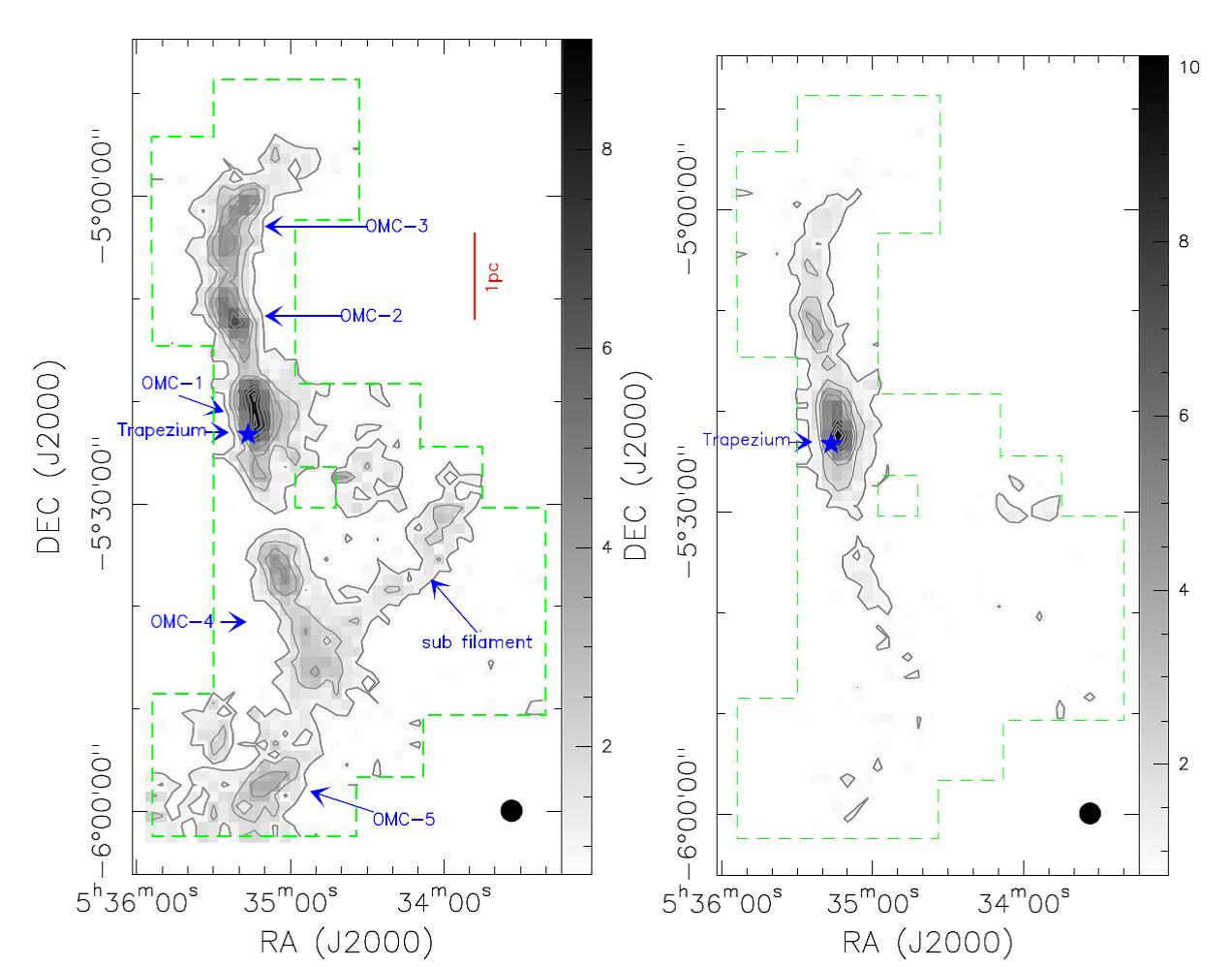Research progress of filamentary structures in Molecular Clouds
Recent observations suggest a scenario in which filamentary structures in the interstellar medium represent the first step towards clumps/cores and eventually star formation. The densest filaments would then fragment into prestellar cores owing to gravitational instability. We seek to understand the roles filamentary structures play in high-mass star formation.
In order to understand the roles filamentary structures play in high-mass star formation. Dr. Gang Wu from star formation and evolution group and his colleagues mapped the integral-shaped filament (ISF) located at the northern end of the Orion A molecular cloud in NH3(1, 1) and NH3(2, 2). The observations were made using the Nanshan radio telescope operated by the Xinjiang Astronomical Observatory, Chinese Academy of Sciences. The whole filamentary structure, about 1.2°×0.6°, is uniformly and fully sampled. They investigate the morphology, fragmentation, and temperature properties in this region.
The related work has recently been published in The Astronomy & Astrophysics (A&A 616, A111 2018)
The link to the full paper: http://ads.bao.ac.cn/abs/2018A%26A...616A.111W

Fig. 1. Integrated intensity (zeroth moment) maps of NH3 (1, 1) (left) and (2, 2) (right) of the integral-shaped filament.

